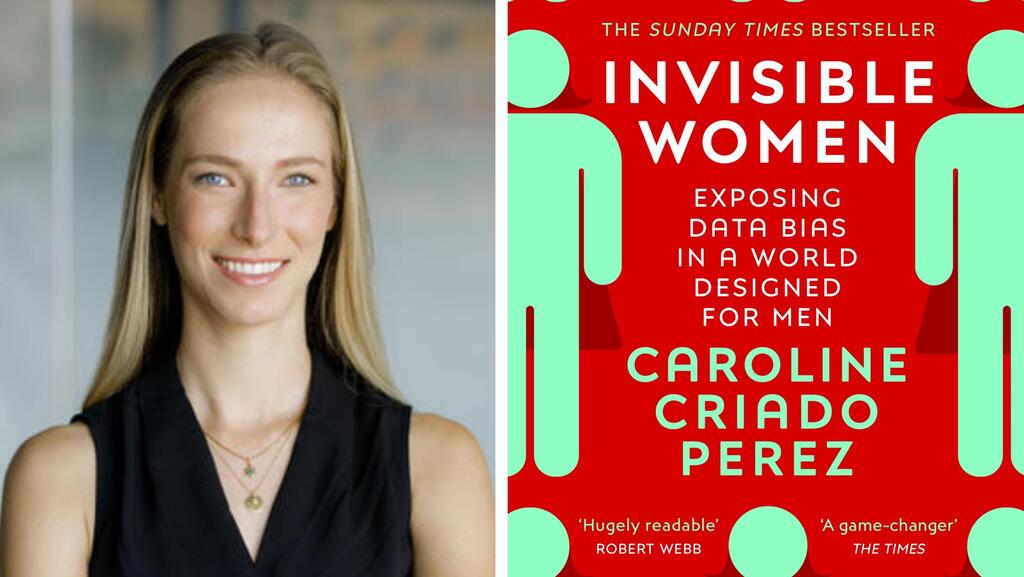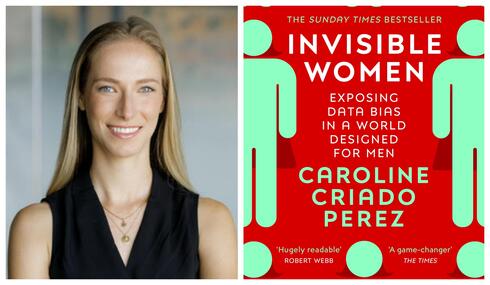
BiblioTech
CTech’s Book Review: Diving deeper into the gender pay gap
Emmanuelle Lipski, Principal at 10D VC, has joined CTech to share a review of “Invisible Women: Data Bias in a World Designed for Men” by Caroline Criado Perez.
Emmanuelle Lipski is a Principal at 10D VC, a Venture Capital and Private Equity Principals firm. She has joined CTech to share a review of “Invisible Women: Data Bias in a World Designed for Men” by Caroline Criado Perez.
Title: “Invisible Women: Data Bias in a World Designed for Men”
Author: Caroline Criado Perez
Format: Book, Tablet, Audiobook
Where: Home
Summary:
“Invisible Women” explores the gender data gap and its profound implications for business and society. It starts by uncovering how the world has been designed and structured based on data that overwhelmingly and primarily represent men, and describes the “male universality” myth as not malicious or event deliberate, but rather the product of thinking that has been around for millennia.
The author then demonstrates how this gender data gap permeates various aspects of our daily lives, from healthcare to transportation, urban planning, and business, where she makes the point that overlooking half the population’s needs leads to suboptimal decision-making and missed market opportunities.
Criado Perez offers a compelling argument for businesses to prioritize gender-inclusive data collection (and analysis) and promote gender equality – it will not only lead them to contribute to a fairer and more equitable world but also enable them to tap into a vast and often overlooked market segment, ultimately driving success and sustainable growth.
Important themes:
In my view the most important passages related to the consequences of the absence of sex-disaggregated data in several aspects of our daily lives.
This includes examples ranging from the more well-known gender pay gap partly driven by the fact that women tend to take on a larger share of unpaid domestic work, and under-representation in leadership positions including, for example, political and tech industries. It also explores this all the way to biased designs in daily objects and activities, such as smartphones being less user-friendly for women’s smaller hands, voice recognition software not understanding female voices very accurately, office temperatures being too cold for most women (since set based on a formula that uses the metabolic rate of a 40-year-old man), or even the “pink tax” - a phenomenon whereby products marketed to women such as shampoo are often more expensive than the same products sold to men.
Related articles:
Sometimes this lack of representation can even have fatal consequences for women, who are 47% more likely to be seriously injured and 17% more likely to die in a car crash (because car crash simulations were conducted with male crash dummies) and have a 50% higher chance of receiving a wrong initial diagnosis following a heart attack, because they typically experience different symptoms than men.
Through several angles, Criado Perez advocates for policy changes and data collection reforms to address the gender data gap and lead us to a more fair and equitable future.
What I’ve learned:
What I found odd about the topic of women’s invisibility is that women aren’t a minority. They are actually the majority. Yet, as Criado Perez shows, women live in a society built mostly by and for men.
The book drove me to think differently about the issue of bias in general and the solution space we’re faced with:
- Question of responsibility: While she calls for more data collection and more involvement of women in decision-making, I wonder if that’s enough, and where does the responsibility split lie (where does it fall on men, on women, or both). For example, should we build creches in workplaces to help women get back to work or should we push for a more equal split of childcare responsibilities? Should we redesign public transportation experiences to make them safer for women or focus on providing education to combat harassment?
- Equality vs. equity: I think the book also illustrates well why equality is not the same as equity For example, applying the same square footage for men’s and women’s restrooms doesn’t work given women tend to use them for longer on average.
- A complex solution space: In the end, I believe a more equal world can only be achieved by not only infrastructure changes (yes, more streetlights may help women feel safer at night) but most importantly by a whole set of mindset, behavior and policy changes, including more female representation in positions of influence, activism, and advocacy to build awareness and create a platform for change and finally policy change to support more inclusive practices. This book has also reinforced my conviction to invest in female-led technologies as part of the solution space
Critiques:
I think this book has been instrumental in raising awareness about the gender data gap and sparking important discussions about it. However, (just like for any piece of work), it comes with limitations as to both the scope of its analysis due to some generalization and simplification of concepts, with a focus on the Western context, as well as on the solution space it offers.
On a personal note, I would have loved for Criado Perez to spend more time on “why”, given all the data we have on the negative impact of gender bias, we do so little to improve things. It is hard to conclude something else than societies not particularly caring about this issue - which worries me more than the actual data gap! I like to think of ‘Invisible Women’ as one important piece to the complex puzzle that is diversity and gender research, public policy, and more.
Who should read this book:
I think everyone should read this book and act as a driver of positive change, but it’s a must, especially for three types of readers:
- Those working on building any kind of product/service, as I think they would benefit from important lessons related to the importance of gathering and analyzing disaggregated data to de-bias design and build a truly user-centric experience.
- Policymakers, in order to ensure fair and equitable outcomes (leveraging the gender lens), as this is especially relevant in the context of AI becoming a central piece of future operations.
- Those working in any kind of managerial position, who would benefit from deep-diving into the value of diversity and inclusion in decision-making and innovation fostering.
